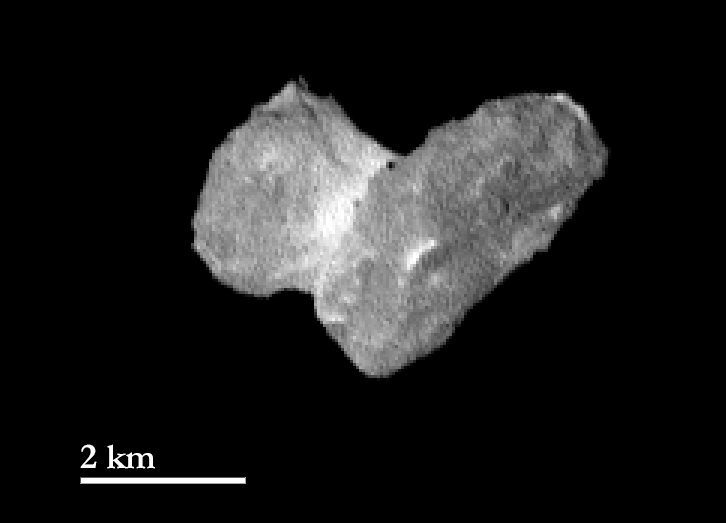WOW! We’re really getting to the good stuff now! This is no computer-generated shape model, this is the real deal: the double-lobed nucleus of Comet 67P/C-G, as imaged by Rosetta’s OSIRIS (Optical, Spectroscopic, and Infrared Remote Imaging System) narrow-angle camera on Tuesday, July 29. At the time just about a week away from making its arrival, ESA’s spacecraft was 1,950 km (1,211 miles) from the comet when this image was taken. (That’s about the distance between Providence, Rhode Island and Miami, Florida… that’s one fancy zoom lens, Rosetta!)

This latest image reveals some actual surface features of the 4-km-wide comet, from a few troughs and mounds to the previously-noted bright band around the “neck” connecting the two lobes. The resolution in the July 29 OSIRIS image is 37 meters per pixel.
Since Rosetta is quickly closing the gap between itself and the comet we can only expect better images to come in the days ahead, so stay tuned — this is going to be an exciting August!
Keep up with the latest news on ESA’s Rosetta blog here, and find out where exactly Rosetta and Comet 67P/C-G are in the Solar System here.
Watch: Once Upon a Time There Was a Spacecraft Called Rosetta
Image credits: ESA/Rosetta/MPS for OSIRIS Team MPS/UPD/LAM/IAA/SSO/INTA/UPM/DASP/IDA
Source: ESA


Sweet!
I know where I would land Philae: on the flat part of the larger hemisphere, where it will have a good view of its landing area, the smaller hemisphere, and the join between them.